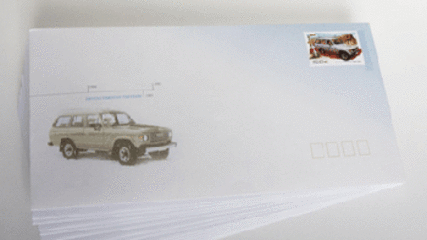10 steps to check your car
By Mandy Eskander · 27 Jul 2007
Self-checking your vehicle goes hand-in-hand with professional servicing of your vehicle. Doing a quick check regularly should keep any major problems at bay. Self-checking your car should enable you to notice any problematic signs earlier, which should prevent it from becoming major and costly. There are only 10 easy steps for a quick check.
Step 1: Engine
Checking the engine should happen at least once a month. While the engine is cool use a dry cloth and wipe down the engine as well as the leads. You should also make sure your engine is steam cleaned at least once or twice a year. Spray down the engine with a degreaser and then pressure wash and steam clean it, a professional detailer can do this job for you.
Step 2: Engine oil
First, you need to warm up your engine. Make sure your car is on level ground, and then start the engine. Let the engine run for at least 1-2 minutes, then switch off the ignition. Take out the dipstick and wipe it clean with a lint-free cloth. Place the dipstick back into the compartment, and take it out to read the level of oil on the dipstick. If you are in doubt what the level of oil should be or what type of oil you should use, you can check the owner’s manual or contact your mechanic.
Step 3: Radiator and coolant levels
You must always keep in mind that the radiator can be hot. So you must never take the radiator cap off when the engine is warm. When taking off the radiator cap, prepare yourself by holding down the radiator cap with a piece of unwanted cloth, twist slowly making sure that nothing will burst out. The radiator should have a certain amount of coolant (antifreeze), check by looking at the level of coolant in the plastic container. The coolant should be between the top and bottom marks on the container.
Step 4: Battery
The battery produces explosive gas and corrosive fluid so it is important that you are very careful when checking and handling the battery. You must not smoke anywhere near the battery or check the battery near flames or paint. Do not bring the battery fluid anywhere near your eyes, skin or clothes. The first step to battery checking is to tighten the battery leads if the leads are loose and make sure they are clean. Finally remove the battery cap to check the fluid level, there should be at least 5mm of fluid covering the metal plates. If the fluid level is low, you will need to refill it with distilled water.
Step 5: Headlights
When you are always the one driving your car, it is very rare you would notice if the lights are working. So it is important to take some time to check the light this includes the low beam, high beam, indicators, stop and reverse. In order to achieve the check you will need to have a second person with you so they can sit in the car and switch on the lights while you look. If you're alone you can test it by parking the car close to a wall or next to a mirror in the garage and watch the lights flash.
Step 6: Windscreen washer
You will need to find the windscreen washer bottle which is in the engine bay, if you are not sure you can check the owner’s manual. Fill the bottle up with clean water and ‘windscreen washing liquid,’ which you can purchase from your local petrol station or automotive retailer. Some people have been opting for a cheaper alternative like using normal dishwashing liquid, but be careful it could potentially harm your vehicle's paint or wiper blades.
Step 7: Windscreen wipers
Turn on the windscreen wipers and make note if it’s not working properly. If your windscreen wipers are cracked or aren’t working correctly you may need to replace it. You should also make sure the rubber is intact, if the rubber is falling off or scraping hard against the windscreen then its time you bought new rubber. The rubber can be easily removed and replaced. The windscreen rubber is fairly cheap and can be purchased at any automotive retailer.
Step 8: Steering and brake
Sit in your car without turning on your engine and press the brake pedal, to check if it’s loose. While the engine is still off place your hands on the steering wheel and try to point the tyres from side to side. This is to check how much free movement there is, the steering wheel shouldn’t move more than 50mm. If it does make sure you take it to the mechanic to have a look at it.
Step 9: Wiring and hosing
If you find any loose, disconnected or damaged wiring under your bonnet you should get this checked out immediately. Check that your radiator, heater hoses, fuel lines, pipes, brake lines and or power steering lines are not damaged. To do this just trace the pipe from one end to the other, and feel for any strains that may reveal a leak.
Step 10: Tyres
It is important to check your tyre pressure when your tyres are cold. You can check the pressure at your local petrol station but it is better to purchase a tyre gauge rather than using the one at the service station, which may not always provide an accurate reading. If you are unsure of the correct pressure for your tyres you may be able to find a tyre chart inside the driver’s door, glove box or owner’s manual under car specification.
Check that the tyre treads are not worn out. The tread should be at least 1.5mm where the tyre touches the road. Look at your tyres carefully and make sure there is no visible damage such as a bludge or a hole.









